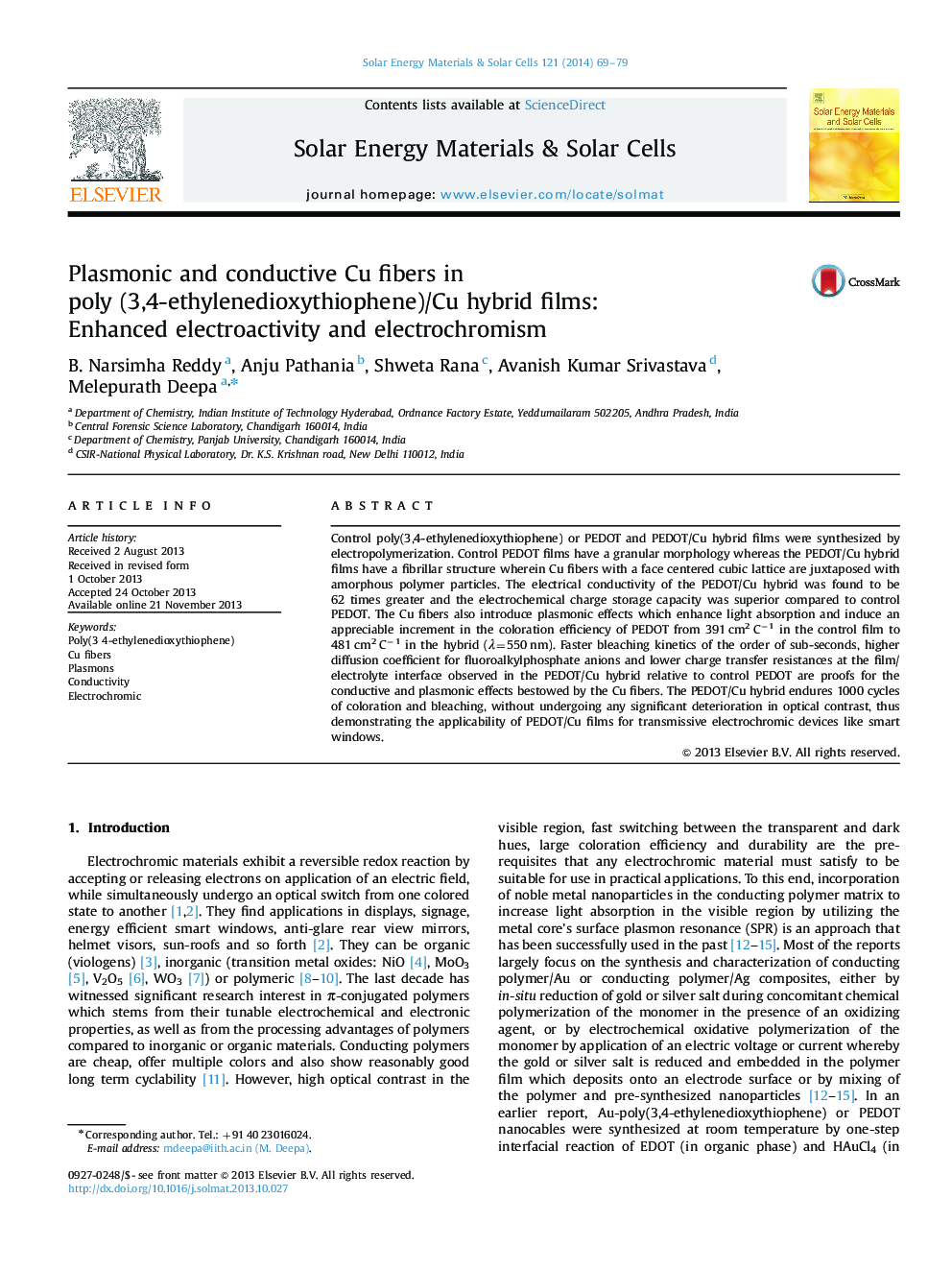| کد مقاله | کد نشریه | سال انتشار | مقاله انگلیسی | نسخه تمام متن |
|---|---|---|---|---|
| 78207 | 49320 | 2014 | 11 صفحه PDF | دانلود رایگان |

• Electropolymerized poly(3,4-ethylenedioxythiophene) or PEDOT and PEDOT/Cu hybrid films.
• PEDOT/Cu films contain crystalline Cu fibers and amorphous polymer particles.
• Electrical conductivity of PEDOT/Cu hybrid is 62 times higher than control PEDOT.
• Plasmonic effect of Cu fibers increases PEDOT's optical absorption.
• PEDOT/Cu shows a coloration efficiency of 481 cm2 C−1 suitable for electrochromic applications.
Control poly(3,4-ethylenedioxythiophene) or PEDOT and PEDOT/Cu hybrid films were synthesized by electropolymerization. Control PEDOT films have a granular morphology whereas the PEDOT/Cu hybrid films have a fibrillar structure wherein Cu fibers with a face centered cubic lattice are juxtaposed with amorphous polymer particles. The electrical conductivity of the PEDOT/Cu hybrid was found to be 62 times greater and the electrochemical charge storage capacity was superior compared to control PEDOT. The Cu fibers also introduce plasmonic effects which enhance light absorption and induce an appreciable increment in the coloration efficiency of PEDOT from 391 cm2 C−1 in the control film to 481 cm2 C−1 in the hybrid (λ=550 nm). Faster bleaching kinetics of the order of sub-seconds, higher diffusion coefficient for fluoroalkylphosphate anions and lower charge transfer resistances at the film/electrolyte interface observed in the PEDOT/Cu hybrid relative to control PEDOT are proofs for the conductive and plasmonic effects bestowed by the Cu fibers. The PEDOT/Cu hybrid endures 1000 cycles of coloration and bleaching, without undergoing any significant deterioration in optical contrast, thus demonstrating the applicability of PEDOT/Cu films for transmissive electrochromic devices like smart windows.
Figure optionsDownload as PowerPoint slide
Journal: Solar Energy Materials and Solar Cells - Volume 121, February 2014, Pages 69–79